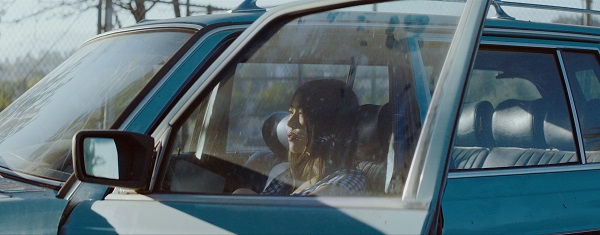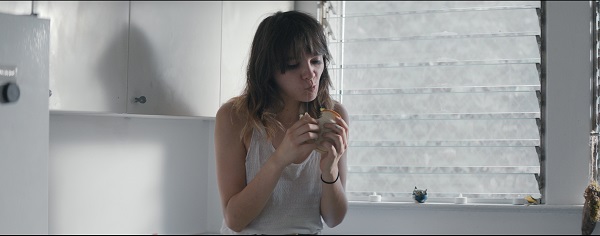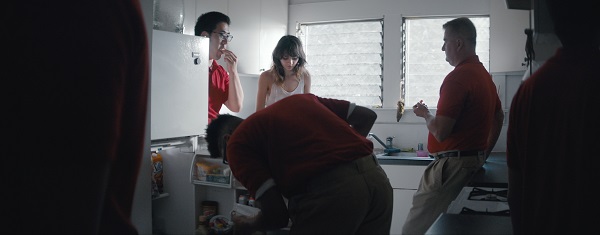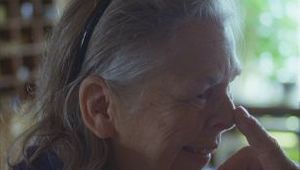
Solidarity & Subversion: Riley Blakeway on Cherry Glazerr’s ‘Told You I'd Be With The Guys’

Since entering the world of commercial filmmaking at the
tender age of 19, Riley Blakeway has solidified his reputation as one of the
most talented next-generation filmmakers today. Now 27, the Sydney-born
director and photographer has built up a formidable repertoire of creative and
commercial work, and exhibited at festivals around the world, including SXSW,
The Kinsale Shark Awards, and the Semi Permanent Short Film Showcase in Sydney.
Riley brings his signature dream-like visuals and beautiful cinematography to
his latest project: a hypnotic, passive-oppressive video for up-and-coming LA rock
band Cherry Glazerr, who’s effortlessly cool, punk-laced tunes have attracted the
ears of Pitchfork, Dazed, and NME.
The Robber’s Dog director discusses the creative vision
behind the trippy promo for ‘I Told You I’d Be With The Guys’, which centres around
a band-practice-turned-claustrophobic-nightmare. Riley reveals the gender-equality
drive behind the film and how he sought to rewrite the cinematic shorthand for
misogyny to speak to a broader audience.
LBB> How did you end up working with Cherry Glazerr?
RB> My girlfriend, Sasami, is in the band so I’ve gotten to know
Clem [Clementine Creevy -singer and guitarist] and Tabor [Tabor Allen -
drummer] really well over the past year or so. They’re all about working with
people they trust and respect, and I feel the same way, so the collaboration
made sense. After spending some time with the band and hearing what
they wanted to do, I was really keen to help make it happen.
LBB> How involved were the artist and label in the creative idea?
RB> When it comes to creative, Cherry Glazerr have complete control
over their image and their voice. All of the people on their team are really
supportive in that way. Clem had an idea of what she wanted the video to say,
so I collaborated with her and the band to translate this into a concept for
the film.
LBB> What was the thinking behind the narrative?
RB> The song is about Clem’s realisation that she needs to consciously strive for solidarity with
other women in order to combat the sexism that’s ingrained in our culture and,
consequently, within herself.
Sasami and Clem have opened my eyes to a lot of
gender-equality issues that I feel like I was previously blind to as a result
of the society I grew up in. This is part of the reason I felt really compelled
to work on this. Even travelling with the band and witnessing sexism just
within the music industry was pretty shocking. The way that the girls were
treated at some venues was appalling: the sound guys would assume that they
were just girls with the band along for the ride. This attitude needs to change
and the idea behind this song and video is to help start a dialogue.
Using physical men to fill up the space was a
simple and distilled way of achieving this feeling of suffocation without being
too heavy-handed. I wanted to create a passive battle of entitlement that ended
with the men overpowering the scenes solely with pure physicality. They’re not
being malicious; they’re just taking up too much space.


LBB> What was behind the matching red shirts and khakis worn by the men
in the film?
RB> My idea was to create an archetype of man, rather than to portray
any particular type of man individually. We’re used to seeing misogyny
represented in film by jocks and bros but this message is broader than that.
The dialogue is about a widespread societal issue and we sought to represent
this through the diversity of the cast of extras in uniform.
While we were researching, Sasami found a screenshot from Silence
of the Lambs, in which Jodie Foster is standing in an elevator full of men in
red shirts and khaki pants. The scene only lasts about three seconds but it’s
such a powerful and profound image. It was used to establish her character as
being a woman in a male-dominated world, and it was a big inspiration for the
uniformed look in our video.
LBB> It seems that there are subtle hints to non-conformance in the
band’s styling: for example, the lead singer wears no bra and doesn’t shave.
Was this a conscious decision on your part, or a decision by the artist?
RB> This was all Clem just being herself. I only asked them to wear
pale whites and greys to complement the theme.

LBB> Was the LA look important to the band’s aesthetic in the film?
RB> Definitely. We shot in a house in Highland Park, LA, that
belongs to some friends of the band. Mukta and the girls that live in the house
are awesome and were really supportive of the film’s message. They did us a
huge favour allowing us to shoot there. I wanted it to feel like it was the
band’s own personal space in the video so that when the men were introduced, it
felt more invasive.
LBB> The camera angles and slow frames make this film so hypnotic.
Did you have any directorial influences on the style?
RB> I think this is where I had the most fun, creatively speaking. I
wanted to repeat the shots in the chorus scenes to make the addition of the
guys more pronounced. The way we shot the film was heavily dictated by this, as
well as the decision to use a dolly to achieve the repetition. This is what
really gave it my visual aesthetic and I’m pleased with how it turned out; I
like the patience of the edit.











